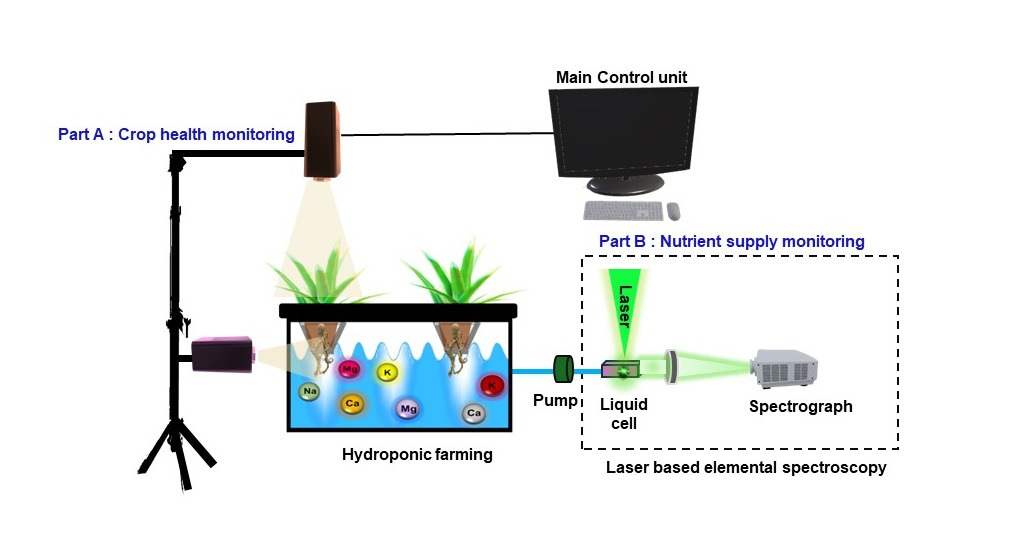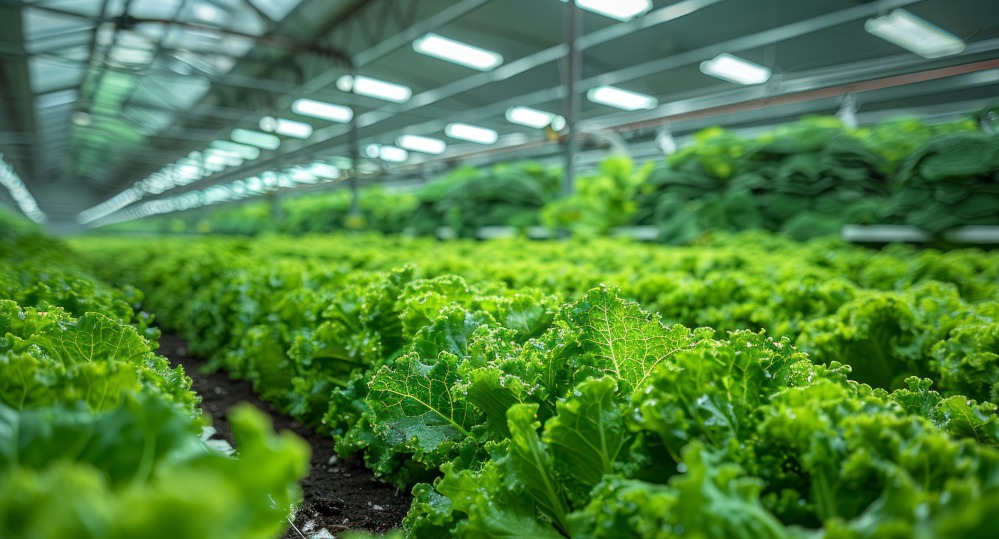Photonic Technologies For Real-Time Hydroponic Crop Health And Nutrient Supply Monitoring
KEY INFORMATION
Life Sciences - Agriculture & Aquaculture
TECHNOLOGY OVERVIEW
Indoor vertical farming is pivotal for addressing future food challenges, particularly in arable land-scarce countries. One common method is hydroponics, which uses mineral and nutrient solutions in a water-based platform to grow crops. To optimize the crop yield and to reduce the man work hours required, it is important to automate crop health monitoring and replenishing of specific nutrients. Currently, these tasks are labour-intensive and subjective. While some imaging techniques exist for detecting plant stress and chlorophyll monitoring, a complete system covering all aspects is still lacking. For nutrient analysis, tools like pH and electroconductivity meters can only detect a change in the nutrient composition to start a feedback loop but are unable to determine the specific nutrient component or deficiency level.
This technology is a comprehensive quantitative monitoring system integrating imaging spectroscopy and laser-based elemental spectroscopy to quickly identify the crop growth stages, alert crop stresses (tested on several lettuce species) and quantify specific nutrient levels in the nutrient supply. This allows for reduced man work hours and improvement of crop yield.
TECHNOLOGY FEATURES & SPECIFICATIONS
- Complete crop health monitoring through combined leaf, root, and nutrient supply monitoring, with automated replenishment
- Real-time in-situ component wise nutrient monitoring capability with high sensitivity (in ppb levels) enabling automated selective nutrient replenishing
- Non-invasive and non-contact, no sample preparation required
- Modular sub-systems allowing for easy integration with existing systems
- Machine learning capability for improved spectral library creation, enabling rapid and efficient monitoring
POTENTIAL APPLICATIONS
Applications validated at lab scale:
- Automated hydroponic crop monitoring in large indoor agricultural farms
- Inline, real-time nutrient monitoring of nutrient solutions
Other applications tested at experimental POC scale and shown to be more rapid and accurate than existing methods:
- Real-time water quality monitoring
- Post-harvest quality determination of crops
- Trace elemental detection in body fluid
Unique Value Proposition
- Offers full-spectrum monitrong for both crop health and nutrient supply, covering both leaf and root systems
- Enables automated, real-time nutrient replenishment with precise, component-wise monitoring at ppb sensitivity levels
- Features modular subsystems and easy integration with existing setups, supported by specific spectral libraries and machine learning for efficient monitoring and classification


